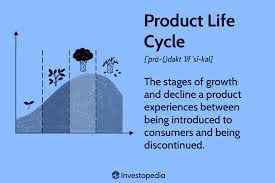Modern Home Makeover
In the fast-paced world we live in, the concept of home design has evolved dramatically. Modern homeowners are increasingly drawn to the simplicity and elegance that minimalism and sleek design offer. This article will delve into the essentials of a modern home makeover, exploring how embracing minimalism and sleek design can transform living spaces into stylish sanctuaries.
The Essence of Minimalism
Minimalism, in the context of home design, is about simplicity and functionality. It involves paring down to the essentials, eliminating excess, and focusing on what truly matters. By doing so, homeowners create a serene and clutter-free environment. The advantages of adopting a minimalist approach extend beyond aesthetics, positively impacting mental well-being and overall quality of life.
Sleek Design: Aesthetic Appeal
Sleek design emphasizes clean lines, smooth surfaces, and a minimalist aesthetic. It is about achieving a polished and refined look that exudes sophistication. Incorporating sleek design elements can instantly elevate the overall appeal of your home, making it a visually pleasing and inviting space.
Choosing the Right Color Palette
When embracing minimalism, the color palette plays a pivotal role. Neutral tones such as whites, grays, and beiges create a calming backdrop and contribute to the feeling of spaciousness. Introducing pops of color through accent pieces or artwork adds visual interest without compromising the minimalist vibe.
Furniture Selection and Placement
Selecting the right furniture is crucial for a successful modern home makeover. Opt for pieces that serve multiple functions and have a streamlined design. Strategic placement of furniture can optimize space and create a harmonious flow throughout the home.
Innovative Storage Solutions
One of the challenges of minimalism is the need for effective storage solutions. Integrating storage seamlessly into the design, such as hidden cabinets or built-in shelves, ensures that clutter is kept out of sight. Creative ideas, like under-bed storage or wall-mounted organizers, can maximize space without sacrificing style.
Lighting: Creating Ambiance
Proper lighting is integral to the success of a modern home makeover. Ambient, task, and accent lighting should be carefully considered to create the desired ambiance. Smart lighting solutions can enhance both the functionality and aesthetic of the space.
Technological Integration
In the era of smart homes, technological integration is a key aspect of modern design. Smart thermostats, lighting systems, and security features not only add convenience but also contribute to the sleek and futuristic feel of a modern home.
Sustainability in Modern Makeovers
As environmental awareness grows, homeowners are increasingly seeking sustainable options for their modern makeovers. Choosing eco-friendly materials and furnishings aligns with the principles of minimalism and contributes to a healthier planet.
DIY Minimalist Projects
Embarking on a modern home makeover doesn’t have to break the bank. There are plenty of budget-friendly DIY projects that can add a personal touch to your space. From handmade decor to upcycled furniture, these projects allow for creativity within the constraints of minimalism.
Minimalist Art and Decor
Selecting artwork and decor items that align with the principles of minimalism is essential. Striking a balance between simplicity and personal expression is key. Choose pieces that resonate with you and contribute to the overall tranquility of your home.
Benefits of a Minimalist Home
The benefits of adopting a minimalist lifestyle extend beyond the visual appeal of your home. A clutter-free environment promotes mental clarity, reduces stress, and simplifies cleaning and maintenance. A minimalist home becomes a sanctuary of peace and tranquility.
Challenges and How to Overcome Them
Transitioning to a minimalist lifestyle may pose challenges, especially for those accustomed to more traditional or eclectic styles. Adapting gradually and finding creative solutions for limited storage can ease the process. Embracing minimalism is a journey, and each step brings you closer to a more intentional and fulfilling living space.
Real-Life Minimalist Home Examples
To inspire and provide tangible examples, this section will showcase real-life modern home makeovers. Before-and-after transformations will illustrate how homeowners have successfully embraced minimalism and sleek design, turning their homes into functional works of art.
Conclusion
A modern home makeover centered around minimalism and sleek design is a transformative journey. By carefully curating your space, choosing functional elements, and embracing simplicity, you create a home that reflects your style and enhances your well-being. The key lies in finding the balance between aesthetic appeal and practical functionality.
Frequently Asked Questions (FAQs)
- Is minimalism only about getting rid of possessions?
Minimalism involves simplifying your lifestyle, which includes decluttering possessions, but it’s also about focusing on what truly matters.
- Can I still have a cozy home with a minimalist design?
Absolutely! Minimalist design can be warm and inviting. It’s about creating a space that brings you joy and comfort.
- How do I choose the right color palette for a minimalist home?
Stick to neutral tones for a calming effect, and consider adding pops of color through accent pieces or artwork.
- Are there affordable ways to embrace minimalism in home decor?
Yes, many DIY projects and budget-friendly ideas can help you achieve a minimalist look without breaking the bank.
- What are the key challenges of maintaining a minimalist home?
Challenges may include adapting to a new lifestyle and finding effective storage solutions. Overcoming these challenges is part of the minimalist journey.









